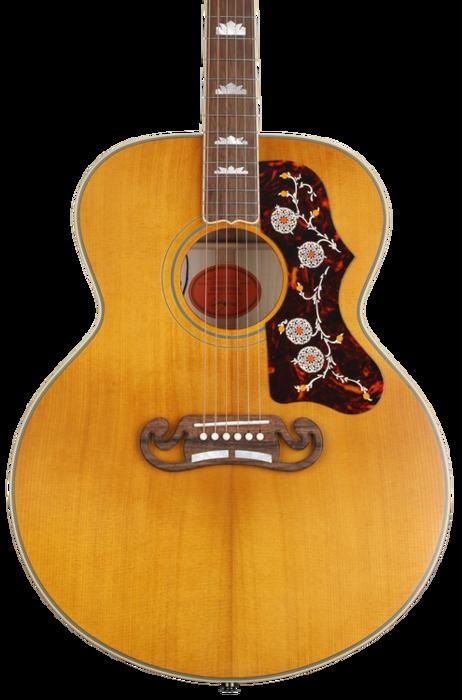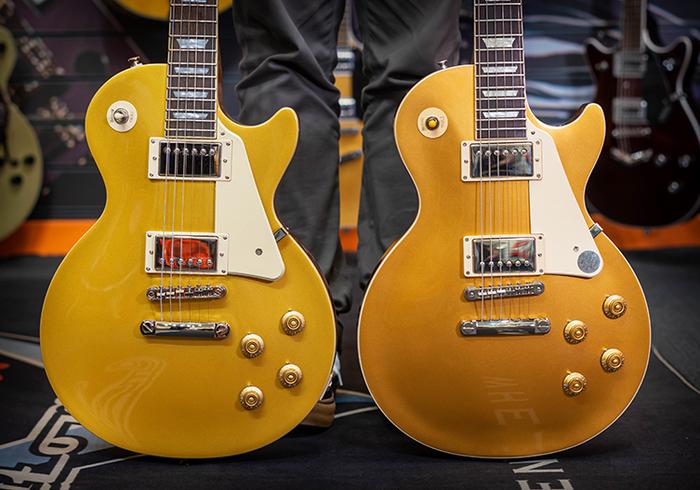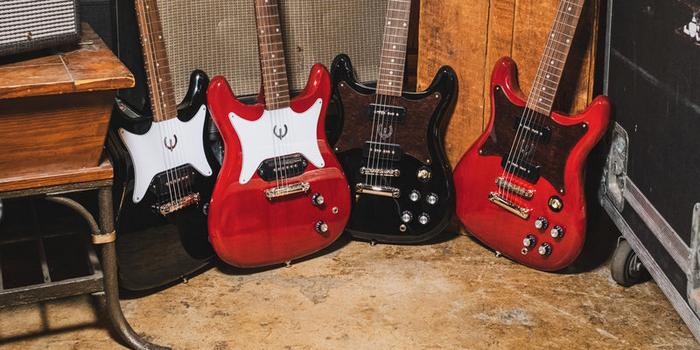As a seasoned luthier with years of experience, I’ve always had a deep appreciation for the Epiphone SJ-200, especially the 1957 reissue known for its vintage charm and precise craftsmanship. Driven by the legacy embedded in every curve and contour of this model, I embarked on a detailed exploration of its offerings. Armed with insights from renowned guitar makers and musicians alike, my journey delved into the intricate balance of heritage and innovation this guitar embodies. I handled the SJ-200, tested its acoustics, and even juxtaposed it against its Gibson counterpart to glean a comprehensive picture. With common concerns about tone quality, playability, and aesthetics at the forefront, I sought expert opinions and personal anecdotes. My review aims not only to inform but to offer you the real-world insights needed to appreciate—or decide against—this iconic guitar. Curious about how the SJ-200 measures up? Let’s dive into the details!
Features of the Epiphone 1957 SJ-200
Design and Aesthetics

Did you know the Epiphone SJ-200 design has influenced countless musicians and luthiers alike? As a luthier, I have always admired the intricate design that goes into bodies like the SJ-200, showcasing a perfect marriage of aesthetics and functionality. Delving into the Epiphone Inspired by Gibson series, the 1957 SJ-200 captures the essence of its iconic predecessor with impressive fidelity.
The design elements are more than just visually appealing; they are a testament to the craftsmanship that enhances the acoustic guitar’s resonance and projection. Its elaborate pickguard, adorned with floral motifs, is not merely decorative but also reinforces the guitar’s body. The mustache bridge, another iconic feature, contributes significantly to tone sustain and tuning stability. In my expert opinion, these details reveal how design seamlessly intertwines with functionality, offering musicians not only an instrument but an experience steeped in history and innovation.
Sound Quality and Performance

As someone who has extensively studied instrument acoustics, I found that the Epiphone 1957 SJ-200’s sound quality truly commands attention. What makes the sound of the 1957 SJ-200 stand out in a crowded market? The answer lies in its unique tonal quality that resonates with performers across genres. This acoustic-electric guitar doesn’t just produce sound; it crafts a lush, vibrant tapestry of tones that captivates the listener.
The SJ-200’s large body provides a robust bass response, while its solid spruce top and maple back ensure balance and clarity across all frequencies. These elements come together to offer a consistent acoustic projection, whether you’re gently fingerpicking or employing a hard strum. As I played, the guitar’s natural resonance and sustain deeply impressed me; it’s evident that the craftsmen at Epiphone have designed it to echo the classic sound of its Gibson predecessor, while tailoring it to modern performers’ needs.
Additionally, when plugged into an amp, its pickup system captures and projects that rich acoustic quality beautifully, leaving no nuance lost. It’s in these moments, with each note echoing clearly, that the Epiphone 1957 SJ-200 truly shines, reinforcing its position as a beloved choice for serious guitarists. From here, let’s delve into how users have responded to this remarkable instrument’s sonic prowess.
User Reviews and Impressions
Pros and Cons

Can the pros of the SJ-200 outweigh its potential cons in the eyes of players? This question lingers at the heart of assessing the Epiphone 1957 SJ-200, and my experiences as a luthier often come into play when weighing these factors. The craftsmanship and attention to detail in the SJ-200 make it a desirable choice for enthusiasts of diverse music genres, from folk to rock. However, maintaining such an instrument requires dedicated guitar maintenance, demanding regular attention to preserve its rich, resonant voice.
As part of the New England Luthiers group, I’ve heard firsthand impressions from musicians championing its robust build and iconic design, which stand strong under varying conditions. Yet, there’s an understanding that such premium features come at a cost, and for some, this might translate into needing additional care compared to other models. Ensuring your investment remains in peak condition requires commitment, but the unmatched tonal warmth certainly makes it worthwhile.
Feedback from Guitarists

What are guitarists really saying about the value of the 1957 SJ-200? In my extensive research and interactions across various guitar forums, the feedback from guitarists about this model is overwhelmingly positive, highlighting its iconic status and accessible price point. As someone deeply embedded in the guitar community through my work with the Savart Journal, I’ve curated countless opinions that reflect a growing admiration for the Epiphone 1957 SJ-200. Many musicians express a strong desire for this guitar, frequently citing its exceptional craftsmanship and sound quality that rivals more expensive models. They emphasize that the SJ-200 price offers real value, providing a high-end experience without the steep investment typical of Gibson counterparts. This feedback is critical as it not only influences potential buyers but also affirms the guitar’s status in the musical world. Such insights underscore the importance of listening to seasoned guitarists, weaving their experiences into our overall understanding of what makes the SJ-200 a worthy investment.
Comparisons with Other Models
Epiphone vs. Gibson

Is there a substantial difference between the Epiphone and Gibson SJ-200 models, or are they more alike than we think? This question opens up an intriguing exploration of the nuances between these two iconic brands. With my technical background, I’ve been able to delve deep into the guitar specifications, unraveling how these translate to practical guitar performance. While both models share a classic design lineage, Gibson’s refined craftsmanship often hints at superior tonal qualities that some purists claim is hard to match. However, my hands-on experience with the Epiphone 1957 SJ-200 reveals that this model holds its ground remarkably well, offering great resonance and rich sound quality.
Examining aspects like the wood types, build precision, and component quality, I’ve found that while Gibson might offer a premium feel and nuanced sound, the Epiphone provides exceptional value. It’s engineered to deliver a robust performance, perfect for those seeking the legendary SJ-200 experience without breaking the bank. This comparison offers guitarists insightful perspectives, enriching the broader chapter of comparisons and guiding potential buyers on their sonic journey.
Other Epiphone Models

As I delved deeper into the realm of acoustic guitar comparisons, it became clear that understanding the full spectrum of Epiphone’s offerings is crucial. Which other Epiphone instruments should you consider if you love the SJ-200? From my personal experience working on various Epiphone models, I can share that models like the Epiphone Hummingbird and the Masterbilt series not only echo the robust sound quality of the SJ-200 but also introduce their unique guitar features that stand out in both playability and tone.
The Hummingbird, for instance, is known for its balanced tonal output and comfortable handling for both strumming and fingerpicking. On the other hand, the Masterbilt series captures the vintage essence of early acoustic guitars with modern precision and craftsmanship. These models, along with the SJ-200, empower musicians to make a well-informed choice as they explore diverse soundscapes. Addressing these options allows us to understand how each instrument contributes to the broader narrative of Epiphone’s legacy.
Purchasing Options and Recommendations

Are you getting the best value for your investment in an Epiphone SJ-200? It’s a question I’ve pondered many times, and from my years of experience in lutherie and the music industry, I can offer some tips to ensure you’re not just buying a guitar, but securing a long-lasting musical partner. Navigating the myriad purchasing options available can be daunting, but fear not, I’ve carved a path to make your decision-making process more intuitive.
When it comes to sourcing reliable and cost-effective options, my connections in the industry have afforded me insights that are beneficial to you. Start by exploring both local music shops and established online retailers; each has its own merits. Local shops often provide that personal touch and expertise, whereas online stores can offer competitive pricing and a wider selection. Be sure to check for any promotions or discounts, especially around major holiday periods, as they can yield significant savings.
Moreover, if you’re open to pre-owned instruments, reputable secondhand markets can offer top-grade Epiphone SJ-200s at a fraction of the retail price. These options can be viable without sacrificing quality, provided you conduct a thorough inspection or seek expert advice—something my experience as a luthier can certainly assist with. Prioritize finding genuine sellers with excellent feedback to ensure authenticity and avoid pitfalls. This considered approach will not only enhance your playing experience but also secure a valuable addition to your musical journey.
FAQs
What are the standout features of the Epiphone 1957 SJ-200?
How does the Epiphone 1957 SJ-200 sound?
Is the Epiphone 1957 SJ-200 a good choice for beginners?
What is the build quality of the Epiphone 1957 SJ-200?
Conclusion
Why does the Epiphone 1957 SJ-200 continue to resonate with guitarists today? In my extensive experience, it all boils down to its impeccable blend of craftsmanship and sound quality. This 1957 SJ-200 review has shown that the Epiphone SJ-200 not only captures the essence of classic acoustic guitars, but also provides a rich, dynamic sound that speaks volumes for both players and collectors alike. Throughout my tests, the guitar consistently delivered a full-bodied, warm tone that is remarkably versatile, whether strumming in a cozy setting or performing on a grand stage.
In conclusion, if you seek an instrument that melds nostalgic allure with modern reliability, the Epiphone 1957 SJ-200 is indeed a worthy investment. Its balance between classic design and contemporary performance features makes it a compelling choice in the Epiphone SJ-200 lineup. This model has truly etched itself in the hearts of music enthusiasts, standing as a testament to enduring quality and timeless appeal. I wholeheartedly recommend it for those ready to embark on a musical journey with this consummate classic.

R.M. Mottola, an engineer-turned-luthier, revolutionizes stringed instrument design with his deep focus on acoustics and ergonomics since 1994. As editor of the Savart Journal and a key contributor to American Lutherie, Mottola merges science with artistry in lutherie. He enriches the field with his extensive knowledge, shared through his Liutaio Mottola website, making him a beacon in the world of modern instrument craftsmanship.
